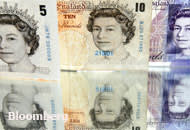Of course income tax isn't the only tax burden on your earnings - Fidelity International has calculated that with the increase to VAT and the proposed increase to National Insurance (NI) this year, a basic-rate tax payer could (based on marginal rates) soon be paying out over 43 per cent in taxes on each new pound they earn and spend. The story gets progressively worse for higher-rate taxpayers and top-rate tax payers who are set to face a tax burden of 52 per cent and 60 per cent respectively (see the table below). Those earning just over £100,000 and caught in the personal allowance 'tax-trap' face a staggering 68 per cent.
There's not much you can do about NI and VAT other than pack up and move to Switzerland but there are number of tax planning options you can use to help lower your income tax bill.
1. Use your allowance
Everyone has a tax free personal allowance (soon to be £7,475) - if one spouse is not a higher-rate taxpayer, income producing assets can be transferred to that spouse. He/she can use their personal tax allowance and basic rate band to reduce the joint income tax rate.
George Bull, tax expert at Baker Tilly, says married couples should consider whether equalisation or joint ownership of investments will transfer income to the lower-taxed one. Unmarried couples can equalise non-CGT assets such as bank accounts and may find it possible to equalise or transfer assets on which gains are less than their annual CGT exemption. Even if an asset is only put into joint ownership the day before it produces income (such as interest or a dividend) that income will still be split equally between both owners.
2. Revisit deceased estates
If a relative has died within the past two years a rearrangement of their estate could put income into the hands of family members whose income level is below the 40 per cent or 50 per cent income tax threshold.
3. Tax-efficient investments
There are a number of tax efficient investments that can help you save tax, and most tax experts advise you make use of these while they are still in place. Enterprise investment schemes (EIS), venture capital trusts (VCTs) and individual savings accounts (Isa) investments are all worth considering. Each year, up to £200,000 may be invested into a VCT with 30 per cent tax relief (provided you hold it for five years). EIS investment of up to £500,000 gives relief at 20 per cent (if you hold the investment for three years).
4. Pension allowances
Pensions rules are changing and the transition to the new annual and lifetime limits in the next tax year offers ample tax-planning opportunities. Many high-net-worth individuals may not realise that the reduction in the headline annual allowance is good news. Currently, individuals earning over £130,000 a year can only typically contribute up to £20,000. From next year these individuals can contribute £50,000 (gross) and if they earn over £150,000 they could receive tax relief at 50 per cent.
The new carry-forward rules that are being introduced mean that these individuals could make contributions totalling £80,000 in 2011/2012 by carrying forward their unused allowance from the previous year (£30,000) plus their annual allowance of £50,000.
For those who earn between £50,000 and £130,000 it could be a good idea to maximise pension contributions this tax year as you can contribute up to 100 per cent of earnings, receiving 40 per cent tax relief. From 2011/12 you will be restricted by the annual allowance of £50,000 and therefore only have a few months to maximise your pension contributions.
| The tax burden | |||
|---|---|---|---|
| Basic rate tax payer | Higher rate tax payer | Top rate tax payer | |
| Income tax | 20% | 40% | 50% |
| NI | 12% | 2% | 2% |
| Total | 32% | 42% | 52% |
| Net from £100 earned | £68 | £58 | £48 |
| VAT | 20% | 20% | 20% |
| VAT paid when net spent | £11,33 | £9,67 | £8 |
| Marginal tax burden | 43.33% | 51.67% | 60% |
Source: Fidelity
Notes: These are marginal rates of tax burden rather than the average rate paid on all your earnings and are based on spending at the standard rate of VAT. There is no global average as it depends on individual earnings and allowances.












